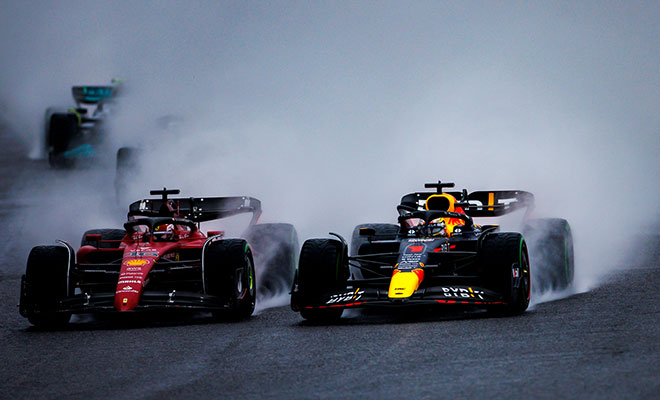Who Will Beat Red Bull in 2024 F1 Season? Red Bull’s 2023 supremacy was unparalleled, setting a high benchmark. With regulations consistent, their RB19 blueprint remains influential. The question looms: Can any of the nine teams, despite the odds, close the gap this year?
Red Bull arguably achieved the most complete rout of its competitors in the 2023 Formula 1 season ever recorded in the series’ illustrious history.
On the surface, there’s scant expectation that their adversaries will bridge the gap this year. With the regulations remaining largely consistent, the principles that shaped the RB19 are set to influence this season as well. Many of Red Bull’s competitors appeared completely mystified by the extent of their superiority, which was modest during qualifying but consistently overwhelming during the races.
Max Verstappen has established himself as the preeminent driver of his era, and Sergio Perez‘s performance last season hardly suggested he’s poised to challenge his teammate significantly.
Red Bull’s dominance last year afforded them the confidence to cease development on their previous car early and pivot to their 2024 endeavor. This strategy might have mitigated the impact of the development restriction penalty they incurred for breaching the 2021 cost cap, assuming it was ever going to significantly hamper them.
Thus, the likelihood of a competitive season hinges solely on the extent to which Red Bull’s nine competitors (one sharing ownership) have narrowed the divide during the off-season. Here is our evaluation of their potential.
BWT Alpine F1 Team
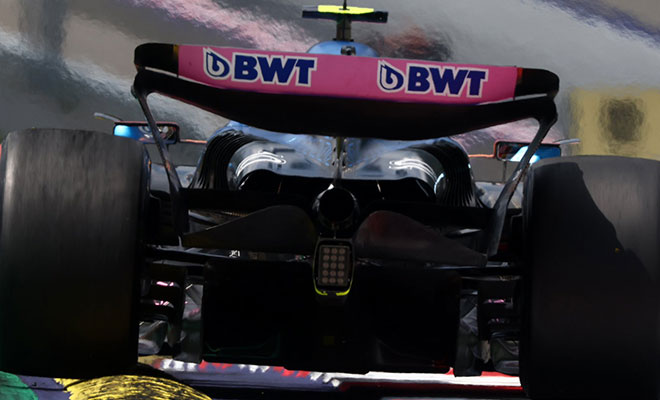
Now operating as Alpine in their ninth season since Renault’s full-fledged reentry into Formula 1, many expected the team to compete significantly closer with the leading squads.
However, they fell dramatically short of these expectations last year, and the management’s response might have further hindered their progress.
Over the past year, the team has seen a substantial exodus, with pivotal figures such as the team principal, chief technical officer, Davide Brivio, and a sporting director with decades of experience all departing, some of their own accord and others not. Max Verstappen frequently attributes Red Bull’s exceptional performance to the stability within their operations, a quality markedly lacking in the Alpine team. They evidently have a considerable journey ahead to reach the competitive level they aspire to.
McLaren F1 2024
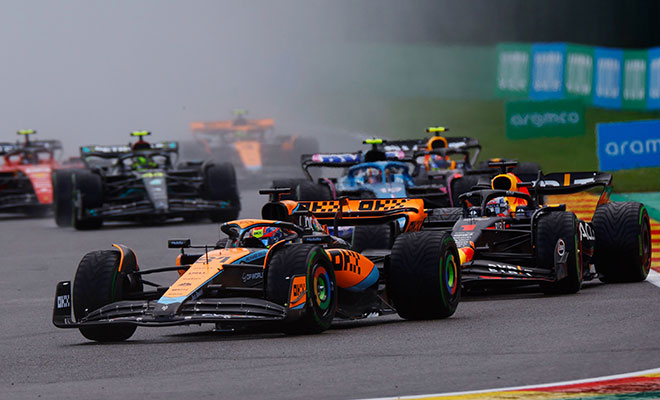
McLaren’s trajectory starkly contrasts with that of Ferrari and Mercedes. Commencing from a modest beginning, their development pace became the subject of widespread envy. Their Austrian Grand Prix upgrade, hailed as their most significant in years, dramatically illustrates this: from trailing by 1.5% in the initial five rounds, they whittled their deficit down to 0.3% in the subsequent five races post-upgrade.
Andrea Stella, making a commendable debut as team principal, bolstered his second year with two pivotal additions: Rob Marshall, formerly of Red Bull, as the technical director for engineering and design, and David Sanchez as the technical director for car concept and performance.
Additionally, their sluggish start last season resulted in a fourth-place finish, affording them more leeway for development under the ATR than the likes of Red Bull, Mercedes, or Ferrari.
Though their driver lineup might be second only to Williams in terms of inexperience, the duo is adept, eager, and notably swift. Lando Norris consistently maximized the car’s potential last year, and Oscar Piastri lived up to the considerable buzz surrounding his debut.
Aston Martin Aramco Formula One Team
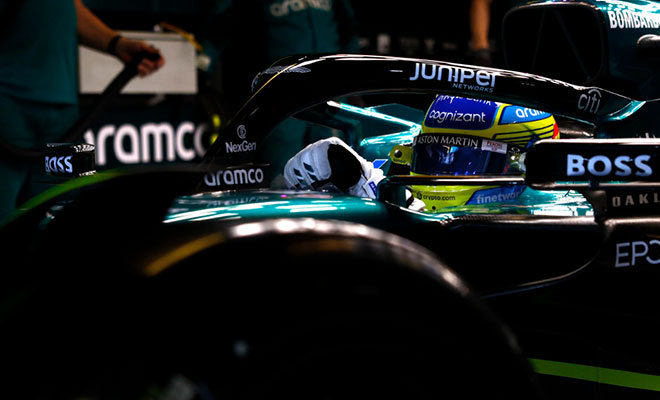
Should Aston Martin manage to replicate the significant advancement they achieved last winter, they might indeed pose a threat to Red Bull. However, the team acknowledges that such a leap is unlikely, and despite several areas of excellence last season, they also exhibited notable weaknesses, culminating in a slide from an early second to a final fifth place in the championship.
Aston Martin primarily showcased its best performance in the first third of the previous year. Fernando Alonso‘s tireless efforts, supported by a team known for its operational acuity, played a crucial role in leveraging remarkable initial pace. The team ensured they didn’t miss any opportunities for points, especially during their encounters with the stewards in Jeddah and Monaco.
However, a mid-season design misstep quickened the pace at which their competitors eroded their lead. Additionally, Alonso’s teammate Lance Stroll consistently left points on the table, likely costing the team at least one position in the standings. Yet, his performance, when considered relative to the car’s potential, could arguably be likened to Sergio Perez’s at Red Bull.
The team spent a considerable portion of last year getting accustomed to their impressive new factory and the advantages it provides. Their ability to effectively utilize this resource, coupled with the extent of Stroll’s improvement in his eighth season, will be pivotal to their overall performance this year.
Scuderia Ferrari
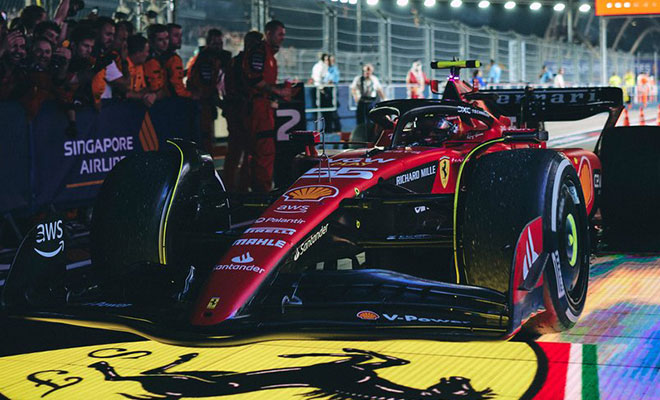
The exit of Ferrari’s team principal, Mattia Binotto, following their 2022 season, sparked inevitable critiques from some quarters, labeling him as an unwarranted casualty of draconian leadership. However, during his fourth year at the helm, Binotto oversaw a season where Ferrari’s initial promise fizzled out, being outpaced in development off the track and outmaneuvered on it.
The appointment of Fred Vasseur from Alfa Romeo was validated throughout his inaugural season last year. The team acknowledged early that the SF-23, conceived well before Vasseur’s tenure, lacked the chops to challenge Red Bull. Mirroring Mercedes, they were unable to enact the radical alterations required to revamp their car mid-season, shifting their focus to 2024 instead.
Meanwhile, Ferrari excelled in maximizing what they could from their existing vehicle in the latter part of the season. Carlos Sainz Jnr emerged as the sole non-Red Bull driver to clinch a race, and with a stroke of better fortune, Charles Leclerc might have triumphed in Las Vegas. As the year concluded, the tifosi, enduring a 15-year championship drought, could at least harbor optimism that should Ferrari craft a competitive vehicle, they possess the capabilities to capitalize on it.
Mercedes-AMG PETRONAS F1 Team

Mercedes conceded their prospects of challenging Red Bull almost immediately in 2023. Approaching the close of their first season in 12 years without a victory, Lewis Hamilton confessed his realization from the initial test that they wouldn’t be competitive.
After misjudging the direction under the new technical regulations in 2022 and failing to rectify the situation last year, Mercedes promptly undertook a substantial overhaul of their technical department, reinstating James Allison as technical director last April. The question now is whether they’ve deciphered the complexities of the latest regulations and adapted their operations to comply effectively with the budget cap and aerodynamic testing limitations. Due to their second-place finish in the previous championship, these restrictions will impact them second most, only less than Red Bull, at the start of the year.
Elsewhere, there’s little to criticize: abundant resources, top-notch facilities, and a robust engine. The W15s will be piloted by Hamilton, arguably the most accomplished and seasoned driver in F1 history, and George Russell, who has proven himself to be a quick and savvy competitor. The significant uncertainty, however, lies with the chassis.
Williams Racing
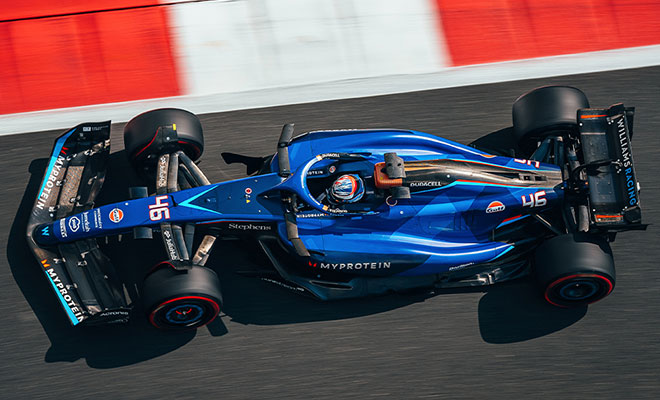
Williams arguably punched above their weight last year, securing a seventh-place finish that somewhat belied their performance in the latter stages of the season. While prospects seem promising for the future, they’re currently navigating the initial phase of a reconstruction process under James Vowles’ leadership. This rejuvenation has included notable acquisitions like Pat Fry from Alpine. They’re steering in the right direction, and consistently scoring points would mark a tangible and realistic progression for them in 2024.
Scuderia AlphaTauri

The potential competitiveness of Red Bull’s secondary team in 2024 presents an intriguing scenario. Initially charting an independent course under the post-2022 technical regulations, they’ve started to align their design more closely with that of the leading team — a sensible strategy given Red Bull’s triumphant performance.
While Formula 1’s regulations impose stringent restrictions on any form of collaboration, the junior team could benefit significantly from sharing common parts, especially if they decide to adopt a ‘clone car’ approach similar to Racing Point’s controversial ‘pink Mercedes’ in 2020. With the increasingly seasoned Yuki Tsunoda and the motivated returnee Daniel Ricciardo behind the wheels, this team could very well emerge as the unexpected contender in the 2024 season.
Stake F1 Team
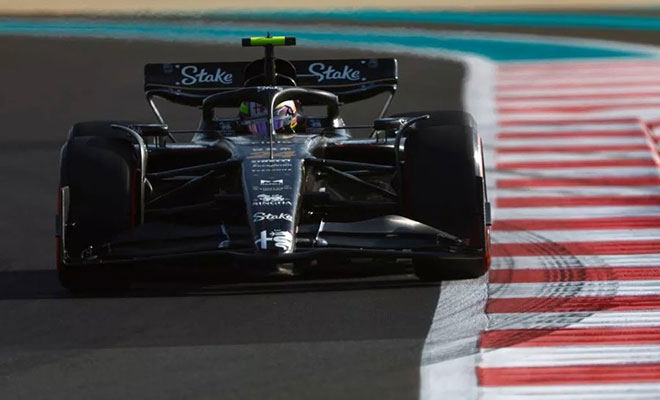
The former Alfa Romeo team, now eyeing Audi’s partnership, aims for full strength by 2027. They are hiring for Stuttgart’s first F1 bid. They’ve rehired James Key to overhaul their 2024 car. Yet, they remain realistic about not leading soon.
MoneyGram Haas F1 Team
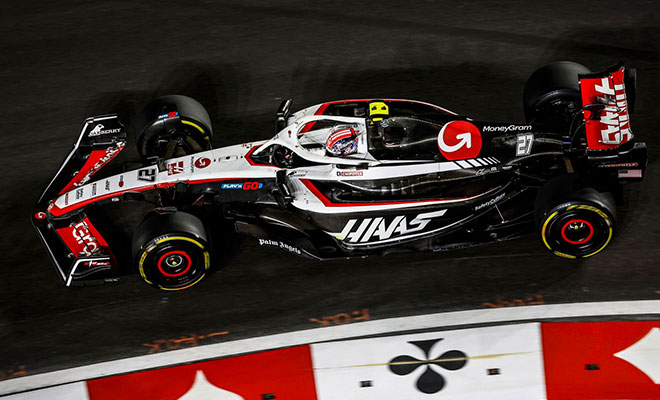
In 2022, Haas appeared to use new regulations to reach the midfield front. Yet, they soon fell back, starting strong but then losing pace to rivals.
A major revamp of their VF-23 late the previous year failed to deliver expected results, raising significant concerns and leading the team to run it alongside its predecessor. Seasoned drivers voiced discontent with the lack of progress as the team fell to the bottom of the standings. The early gains of 2022 proved short-lived, making the chance of soon joining the front runners seem slim.
In the 2024 F1 season, Red Bull Racing aims to continue its dominance. As they look ahead to 2024, Red Bull Racing faces several challenges. In the world of Formula 1, Red Bull’s performance in 2024 will be closely watched. With the 2024 F1 season approaching, Red Bull is gearing up for an exciting year.
You May Like Also – SAINZ EYES MORE ADAPTABLE FERRARI AMID 2024 HOPES
Stay informed on the latest Formula 1 updates by following us on Facebook and Twitter.
- Albon & Sainz Make Top 10 as Williams Impresses
- Leclerc Closes Gap, McLaren Still Leads in Jeddah
- Hadjar Struggles with Balance, Lawson Eyes Q3 in Jeddah
- Bearman Struggles in Saudi GP Practice, More Work Ahead
- McLaren’s Strong Start: Norris Leads, Piastri Close
